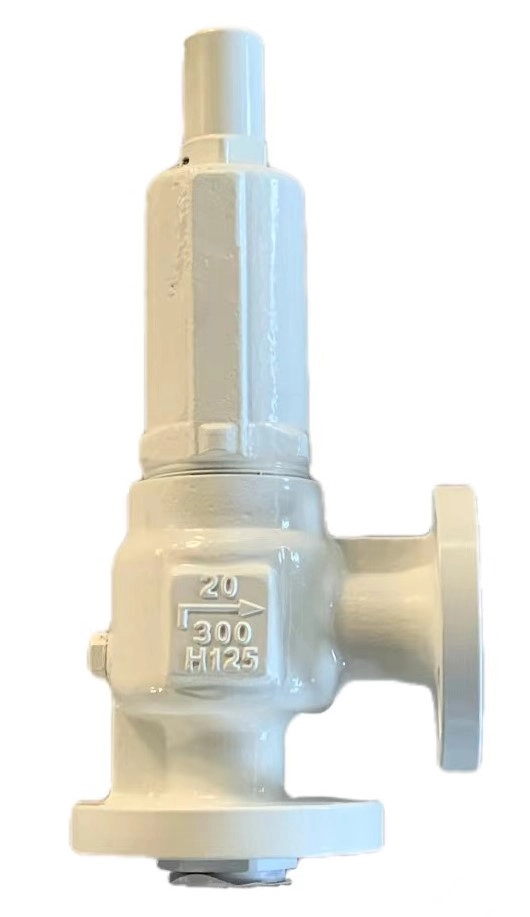Industry Insights into the Standards of the Pressure Relief Valve

Understanding the Basics of Pressure Relief Valves
The Purpose and Functionality of Pressure Relief Valves
Pressure relief valves are vital pieces in lots of industrial setups. They’re built to shield gear, pipes, and people from too much pressure. These gadgets kick in on their own to let out extra pressure when it goes past a set point. This keeps things running safely. Too much pressure can happen for all sorts of reasons—like gear breaking down, clogs, or heat making stuff expand. The main job of a pressure relief valve is to stop disasters by keeping pressure at safe levels. Pressure relief valves can provide solutions in different industry.
Key Components of a Pressure Relief Valve
A usual pressure relief valve has a few important parts that team up to do its safety job well:
- Body and Bonnet: The body holds all the inside bits and keeps everything sturdy. The bonnet shields the inner workings and acts like a protective cap.
- Spring: The spring sets the pressure where the valve pops open. It squeezes or stretches based on how much pressure the system’s got.
- Disc and Seat: These parts lock together to stop leaks when everything’s normal. When pressure gets too high, the disc lifts off the seat to let fluid out.
- Adjusting Screw: This lets you tweak the pressure setting just right.
- Discharge Outlet: This guides the released fluid away from important spots.
The way these parts are made and what they’re made of ensures they last and work well no matter the conditions.
Common Applications of Pressure Relief Valves in Various Industries
Pressure relief valves pop up in all kinds of industries because they’re key for staying safe:
- Oil and Gas Industry: They’re in pipelines, tanks, and plants to handle big pressure moments.
- Chemical Processing: They guard reactors and containers from pressure spikes due to reactions or heat.
- Power Generation: They keep boilers, turbines, and heat exchangers safe by managing steam or gas pressure.
- Pharmaceuticals: They hold steady pressure in processes with delicate stuff.
- Water Treatment Plants: They stop pumps, filters, and pipes from getting wrecked by controlling water pressure.
Standards Governing the Pressure Relief Valve
Overview of Industry Standards for Pressure Relief Valves
Industry rules are a big deal for making sure pressure relief valves are safe, work right, and can be trusted. These rules lay out how to design, test, set up, and care for them.
ASME and API Standards for Pressure Relief Devices
The American Society of Mechanical Engineers (ASME) has set up some key codes for these valves:
- ASME Section VIII: Deals with safety valve rules for pressure containers.
- ASME Section I: Focuses on safety valves for boilers.
The American Petroleum Institute (API) also has standards like API 520 (for picking the right size) and API 526 (for steel safety valves with flanges). These keep things in line with what the industry expects.
ISO Guidelines Relevant to Pressure Relief Valves
The International Organization for Standardization (ISO) gives worldwide tips, like ISO 4126, for safety gear against too much pressure. These cover stuff like testing how well they work, picking materials, and thinking about the environment.
Importance of Compliance with Standards in Industrial Applications
Sticking to these rules matters a ton for keeping things safe and following the law. Skipping them can mean broken equipment, fines, or messes that hurt the environment. Following ASME, API, or ISO rules makes sure pressure relief valves hit tough quality marks and keep everyone confident.
Factors Influencing the Performance of a Pressure Relief Valve
Installation Best Practices for Optimal Performance
Setting up a pressure relief valve the right way is key to making it work well and last. Sticking to industry tips and manufacturer’s advice during setup cuts down risks from too much pressure. First, picking the best spot matters. Put it as close as you can to what it’s protecting to avoid losing pressure. Also, make sure the discharge outlet points away from people and delicate gear to dodge trouble. Keeping everything lined up right during setup stops uneven strain that could mess it up later. Plus, tightening the inlet and outlet connections keeps leaks away and the system solid. Using matching materials for gaskets and seals stops reactions or wear in tough conditions—like rust-proof stuff for harsh fluids. Finally, testing the pressure after setup checks if it’s hitting the right range. This catches problems before everything’s running full speed.
Maintenance Protocols to Ensure Longevity
Keeping up with regular care is a must for a pressure relief valve to stay reliable and last long. A well-cared-for valve works better and cuts downtime and costs. Check parts like the spring, disc, seat, and adjusting screw now and then. They can wear out or get banged up from constant high pressure. Swap out anything beat-up quick to avoid bigger headaches. Cleaning it often gets rid of junk or buildup that might clog it—super important if the fluid’s got lots of bits in it. Greasing the moving parts cuts friction and keeps them going longer, but use the right grease for the valve and fluid. Check the calibration sometimes to make sure the set pressure’s still spot-on. Fix any slip-ups right away. Keeping good notes on all this helps spot patterns and plan checks better down the road.
Troubleshooting Common Issues in Pressure Relief Valves
Even with the best setup and care, problems can pop up in pressure relief valves from stuff like wear or the environment. Chattering—when the valve flips open and shut fast—can happen from a wrong set pressure or jumpy system pressure. Tweaking the pressure or adding a damper can fix it. Leaks around the seat might show up if junk piles up or the seal wears out. Cleaning or swapping parts can seal it up again. Valve’s being stuck often come from rust or gunk inside. Regular cleaning and rust-proof materials can stop that. If the valve won’t open when it should, look for clogs in the inlet or outlet. Checking the spring tension matches the manufacturer’s specs can sort that out too.
Miwival’s Expertise in Pressure Relief Valves

Features and Benefits of Miwival’s Pressure Relief Valve
Innovative Design for Enhanced Safety and Efficiency
Miwival’s pressure relief valves are crafted with smart designs that put safety and smooth running first. They’ve got fancy features like precisely cut parts for spot-on pressure control and steady work in all kinds of conditions. Top-notch materials fight off rust, wear, and wild temperatures. Plus, Miwival’s valves have self-aligning discs that boost sealing and cut leak risks.
Compliance with International Standards
Miwival’s products are all about quality, sticking tight to big-name standards like ASME Section VIII, API 526, and ISO 4126. These rules cover design, testing, setup, and care. Following them means Miwival’s valves hit tough safety goals and keep customers feeling good about them.
Why Choose Miwival for Your Industrial Needs
Miwival shines as a go-to name for industrial fixes thanks to its focus on quality, fresh ideas, and happy customers. Picking Miwival’s gear—like their pressure relief valves—means steady performance backed by tough testing. They’ve got your back with full tech help, from setup tips to fixing troubles. Plus, their big product lineup fits all sorts of jobs, like oil and gas, chemical work, and power plants.
FAQ
Q: What are the key international standards for pressure relief valves?
A: API 526: Specifies requirements for safety relief valves in petroleum and chemical industries, covering pressure ranges up to 15,000 psi.
ISO 4126: Defines performance criteria for safety valves, including leakage rates and temperature limits (e.g., -196°C to 650°C).
ASME PCC-3: Focuses on design and testing for power plants, with pressure ratings up to 10,000 psi.
Q: What are the critical performance metrics for pressure relief valves?
A: Set Pressure Accuracy: ±3% of rated pressure (e.g., 150 psi ±4.5 psi).
Discharge Capacity: Must exceed system flow rates by 20% (e.g., 1,000 L/min for high-pressure systems).
Response Time: <0.5 seconds for rapid pressure spikes (common in hydraulic systems).





